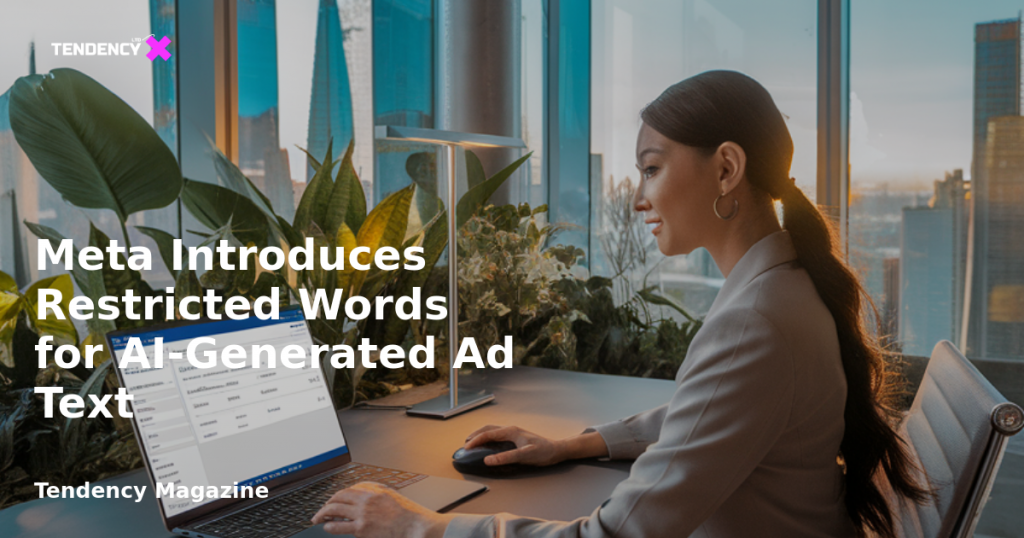Meta Introduces Restricted Words for AI-Generated Ad Text

Introduction to Meta’s New Feature
In the ever-evolving landscape of digital advertising, staying ahead of the curve is crucial for businesses seeking to maintain a competitive edge. Recently, Meta introduced a significant update to its advertising platform, allowing advertisers to restrict certain words in AI-generated ad text. This new feature aims to enhance brand consistency and ensure that AI-generated content aligns more closely with a brand’s voice and values. In this article, we will delve into the details of this update, explore its implications for advertisers, and offer insights into how you can leverage this feature to improve your ad campaigns.
Table of Contents:
- Introduction to Meta’s New Feature
- Understanding the Branding Section in Ads Manager
- The Significance of Restricted Words
- How to Implement Restricted Words in Your Ads
- Addressing AI-Generated Imperfections
- Best Practices for Using AI in Advertising
- Conclusion
Understanding the Branding Section in Ads Manager
Meta’s latest update introduces the ability for advertisers to specify restricted words in AI-generated text for ads. This enhancement is part of a broader effort to provide advertisers with more control over how their brand is represented in automated content. By restricting certain words or phrases, businesses can ensure that the AI-generated text aligns with their brand’s tone and messaging, reducing the risk of miscommunication or off-brand content.
The Significance of Restricted Words
When creating a new ad in Meta’s Ads Manager, advertisers now have access to a comprehensive Branding section. This section, located under the Identity tab, allows businesses to define various aspects of their brand’s representation in AI-generated enhancements. Key elements include logos, fonts, colors, text tone, and visual style. The introduction of restricted words adds another layer of customization, enabling advertisers to fine-tune the language used in their ads.
How to Implement Restricted Words in Your Ads
The restricted words feature is designed to give advertisers more control over the language used in AI-generated text options. By specifying words or phrases that should be excluded, businesses can ensure that the content generated by Meta’s AI aligns with their brand’s voice. This is particularly important in maintaining brand consistency and avoiding language that may not resonate with the target audience.
Meta defines restricted words as terms that advertisers do not want to appear in AI-generated text options. These words are automatically excluded from the Advantage+ Creative text generation process. For example, if an advertiser finds that certain words like “fluff” or “unlock” do not align with their brand messaging, they can add these to the restricted words list to prevent them from being used in their ads.
Addressing AI-Generated Imperfections
Implementing restricted words in your Meta ads is a straightforward process. Here’s a step-by-step guide to help you get started:
- Access the Branding Section: When creating or editing an ad, navigate to the Branding section under the Identity tab in Ads Manager.
- Define Your Brand Elements: Ensure that your brand’s logo, colors, fonts, and text tone are accurately represented.
- Add Restricted Words: Specify any words or phrases you wish to exclude from AI-generated text. Consider terms that may not align with your brand’s voice or those that could be perceived as generic or overused.
- Review and Adjust: Regularly review the performance of your ads and adjust the list of restricted words as necessary to ensure optimal alignment with your brand messaging.
Best Practices for Using AI in Advertising
While AI-generated text can be a valuable tool for creating ad variations and reaching a wider audience, it is not without its imperfections. Some advertisers have noted that despite Meta’s claims of learning from prior ads, the AI-generated text may not always capture the unique voice of their brand. By using the restricted words feature, advertisers can mitigate some of these issues and ensure that the content remains true to their brand identity.
Conclusion
To maximize the benefits of AI-generated text while maintaining brand integrity, consider the following best practices:
- Regularly Update Your Branding Preferences: As your brand evolves, ensure that your branding preferences in Ads Manager are up-to-date. This includes refining text tone settings and updating restricted words.
- Monitor Ad Performance: Keep a close eye on the performance of your AI-generated ads. Use analytics to understand which variations resonate best with your audience and make adjustments as needed.
- Experiment with Different Approaches: Test different combinations of restricted words and branding elements to find the optimal balance that aligns with your brand’s voice and appeals to your target audience.
- Provide Feedback to Meta: If you encounter issues with AI-generated text, consider providing feedback to Meta. This can help improve the AI’s ability to generate content that aligns with your brand.
Meta’s introduction of restricted words for AI-generated ad text is a significant step towards giving advertisers more control over their brand’s representation in automated content. By leveraging this feature, businesses can ensure that their ads maintain brand consistency and resonate with their target audience. As AI continues to play an increasingly important role in digital advertising, staying informed about these updates and implementing best practices will be key to achieving success in your ad campaigns.
2025 Tendency LTD. All rights reserved.

